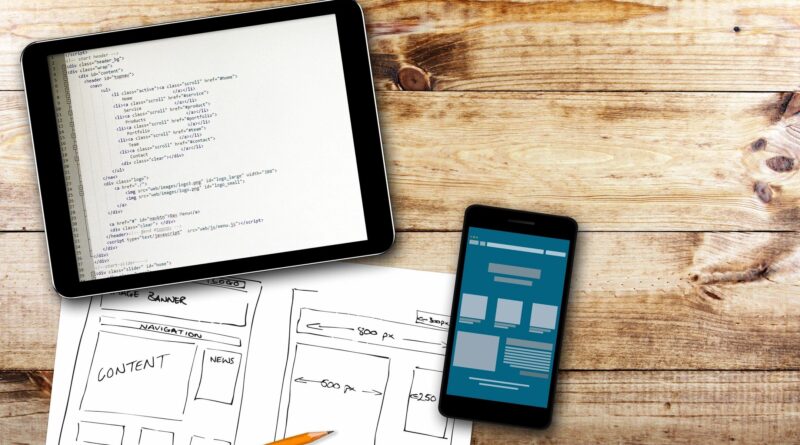Interactive Design and Interaction Cost: Communicating and Designing with Digital Media and User Experience Principles
Interactive Design and Interaction Cost: Communicating and Designing with Digital Media and User Experience Principles
A. Miller
Communication technologies help people communicate with each other, whether through email, computer-mediated technologies such as message boards and Internet forums, and through voice, video, or conferencing systems, and the long list of new media (virtual reality, augmented reality, AI communication, podcasts, video sharing platforms, etc.). These communication technologies influence social and cultural transformations by evolving how people communicate, impacting the patterns of communication they use, and resulting in social interactions designed and carried out through a web-based environment. Communication is a process, where messages progress over time and create an interactive relationship among the communicators. This communication occurs in context to the environment of the interaction. Thus, computer-mediated communication requires human communication and interactive communication design principles to work together. For this, there is a need to focus on the interactive nature of web-based environments and design communication and tools for that context.
—computer-mediated communication requires human communication and interactive communication design principles to work together—
Human Communication Necessitates Interactive Design
Interactive design is a design process that applies knowledge of how users interact with a webpage, application, or product with a focus on “anticipating what users might need to do and ensuring that the interface has elements that are easy to access, understand, and use to facilitate those actions.” As in any business, there are costs associated with content creation, such as time and money spent developing a product. However, there is also an interaction cost to the user of that product, where the interaction cost is the combined cognitive and physical effort that a user must employ to interact with a product to achieve their end goal.
The cognitive effort includes reading, scrolling, looking for something relevant, and typing, which impacts the psychology of the human mind and how one learns, retains, and engages with content (per cognitive and human-computer interaction theories). Ways to reduce these cognitive efforts include limiting page load wait times and the memory load a user must maintain to complete a desired task. Though this may depend on the user and device used, general practices that help reduce cognitive effort include writing for the web or readability by using plain language, bullet points, streamlining navigation, effective color contrasts, and using the space around text effectively (For more advice on how to improve content communication on websites see a case study on disability and user experience which looks at website and online survey accessibility). However, before one can apply interaction cost techniques, it is important to understand the larger issue of user experience.
UX and Interactive Design Background
 User experience (UX) is an iterative process that collects information about users’ behaviors, needs, and motivations for a product, service, or space. This process is typically done in the UX research phase, which informs the UX design phase, synthesizes the research, and applies it to a design form. Both phases rely on iterative processes and UX principles that strive to support user behavior, usability, and usefulness.
User experience (UX) is an iterative process that collects information about users’ behaviors, needs, and motivations for a product, service, or space. This process is typically done in the UX research phase, which informs the UX design phase, synthesizes the research, and applies it to a design form. Both phases rely on iterative processes and UX principles that strive to support user behavior, usability, and usefulness.
As discussed in my book chapter on inclusive design, popular UX research methods and tools include:
- Focus groups: a moderated discussion with a few participants
- Individual interviews
- Personas: researched, reliable, and realistic representations of the user audience
- Surveys: structured questionnaires
- Task/scenario analysis: observation of users performing tasks related to the project
- Content inventory: list of all the content on the site to gain insight into its text, images, and documents
- Organization schemes/structures: how the site categorizes content and relationships within the site
- Market analysis: compare competitive or related projects
These methods and tools help inform the design phase, including the information architecture (content, layout, navigation), interaction design (prompts, calls to action, user flow), user interface design, and usability. UX design is also an element of the customer experience of a product that involves cognitive, sensory, and behavioral responses of a customer or user transaction of an experience. In both cases, example methods and tools used in UX design include:
- Wireframes: illustrations of the UI
- UI elements: buttons, dropdowns, breadcrumbs, search fields, icons, progress bars, etc.
- Card sorting: evaluates the information architecture of the site
- Prototypes: draft version of product
- Color wheel/contrasts illustrate relationships between color levels
- Usability testing: evaluates a product or service by testing with representative users
- Accessibility evaluation
- Scenarios: user stories, context, and user flow
- User documentation: instructions, FAQs, etc.
UX Principles
UX researchers and designers don’t just jump into and run with a project. These professionals are guided by values or principles that frame research and design decisions in a product or service. Depending on the organization and goals of the product, these UX principles may vary. Such principles should be clear, inspire empathy for users, and avoid designing based on personal preference—helping to remind designers they are not the user.
There are broad principles for user experience (e.g., people-centered, less is more, etc.), as well as sub-categories such as visual design and usability or interaction design. For example, in visual communication design, principles include scale, hierarchy, balance, contrast, and Gestalt. Together, these visual design principles inform how design elements complement each other and make useful and thoughtful visual designs that help to communicate a message. In interaction design, principles may include aesthetics, anticipation, consistency, and discoverability. In inclusive design, principles include user empathy (you are not the user), avoiding bias, mindfulness, content prioritization, consistency, offering choice, and documentation. These interaction and inclusive design principles inform how users access, navigate, and discover the platform communicating a message or delivering a product.
Digital Media and Interactive Design
Since interactive design looks at how the user or customer experiences a product, we can extrapolate those UX and visual communication design principles to digital media. For example, aesthetics in the visual design, using contrast, balance, scale, and Gestalt principles, can potentially impact a user’s cognitive, sensory, and behavioral response to a product (or even whether to initiate an interaction with a product). After considering communication design principles, the next approach would be to consider interaction design and inclusive design principles to help retain and sustain user engagement with the product. This can be done by applying user empathy, consistency, discoverability, and offering choice. All of this can impact the interaction cost of a product and the user’s effort to use or continue use.
Some examples of these various UX principles in practice include the following:
Practice | Principle | Media / Interactive Tool Example |
| Personalization of the media based on user preferences by combining AI and language science, lessons are tailored to user preference, level, and comfort | Offer Choice (Inclusive design) | Duolingo https://www.duolingo.com |
| Flexibility for a game session, where users can hop in and out of a text or video chat without having to call or invite anyone | Offer choice and flexibility (inclusive design) | Discord https://discord.com |
| Expectations of media and design tool use include access to premade graphics templates, shapes, and stickers that can be used for custom marketing materials, including text, images, videos, and presentations | Anticipation and consistency (interaction design; inclusive design) | Canva https://www.canva.com |
| Simplicity for web publishing that provides quality without the complexity of traditional content management systems used in web design. | People-centered and user empathy (UX and inclusive design) | Wix https://www.wix.com |
| Scalability of interactive experiences for engagement on desktop, mobile, big screen TV, mobile VR headset, and immersive simulation rooms | Scale and responsive design (visual design and interactive design) | Thinglink https://www.thinglink.com |
| Helpful documentation through knowledge base, community forum, training videos, best practices, and other means for learning and troubleshooting analytics and data culture insights | Documentation (UX and inclusive design) | Tableau https://www.tableau.com |
Interactive Features and Costs Defined by UX Principles
Regardless of the digital media or platform used, a product’s user experience can meet product use goals when UX principles are applied. These UX principles are applicable at the big picture and narrower levels. For example, interactive features of a product are important. Consider hotspot media, a type of feature that enables users to make specific images clickable within a design (such as those used in Thinglink or TimelineJS) or AI-design tools that turn text prompts into images or magically edit or erase image content (such as those in Canva). These interactive features make designing easier and product use more engaging for end-user goals who use these tools to communicate a message.
Whether you are a digital media and interactive design tool user, researcher, instructor, or business, learning to communicate using new or digital media and UX principles can help strengthen your end goals. Understanding user behavior through communication technologies, UX research methods, and applying UX principles in the design of a product can increase usability and user satisfaction. Without UX principles, communication and media designs and the organizations that use them risk alienating the customer or user experience, impacting the interaction cost. Thus, it is critical for any design to first start by defining communication and design values and making design decisions based on those principles. From there, you can minimize the efforts a user must employ to interact with digital media and products, which creates meaningful user experiences that impact long-term use and other costs.
Cite this article in APA as: Miller, A. Interactive design and interaction cost: Communicating and designing with digital media and user experience principles. (2025, April 3). Information Matters, Vol. 5, Issue 4. https://informationmatters.org/2025/04/interactive-design-and-interaction-cost-communicating-and-designing-with-digital-media-and-user-experience-principles/
Author
-
A. Miller is a professor, press director, and interdisciplinary scholar who uses a UX/HCI and inclusive design approach to enhance information communication technologies and social accessibility. Research interests are socio-technical, including accessible computing, educational technology, information and wellness design, digital communication design, information retrieval, digital preservation, and human-centered design.
View all posts





